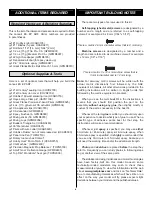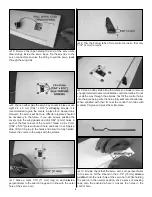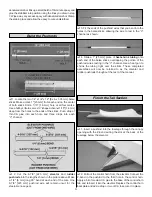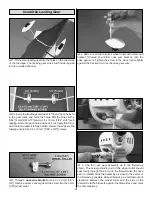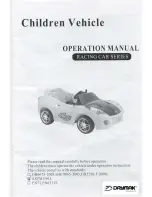
Replacement parts for the Great Planes Lancair ES EP ARF are
available using the order numbers in the Replacement Parts
List that follows. The fastest, most economical service can be
provided by your hobby dealer or mail-order company.
To locate a hobby dealer, visit the Hobbico web site at
www.hobbico.com. Choose “Where to Buy” at the bottom of
the menu on the left side of the page. Follow the instructions
provided on the page to locate a U.S., Canadian or International
dealer. If a hobby shop is not available, replacement parts may also
be ordered from Tower Hobbies
®
at www.towerhobbies.com,
or by calling toll free (800) 637-6050.
Parts may also be ordered directly from Hobby Services by
calling (217) 398-0007, or via facsimile at (217) 398-7721,
but full retail prices and shipping and handling charges will
apply. Illinois and Nevada residents will also be charged
sales tax. If ordering via fax, include a Visa
®
or MasterCard
®
number and expiration date for payment.
Mail parts orders and payments by personal check to:
Hobby Services
3002 N. Apollo Drive, Suite 1
Champaign, IL 61822
Be certain to specify the order number exactly as listed in
the Replacement Parts List. Payment by credit card or
personal check only; no C.O.D.
If additional assistance is required for any reason contact Product
Support by e-mail at [email protected], or by
telephone at (217) 398-8970.
Replacement Parts List
Order Number
Description
How to Purchase
Missing pieces
Contact Product Support
Instruction manual
Contact Product Support
Full-size plans
Not available
GPMA2890
Wing Kit
Contact Hobby Supplier
GPMA2891
Fuse Kit
Contact Hobby Supplier
GPMA2892
Tail Set
Contact Hobby Supplier
GPMA2893
Cowl
Contact Hobby Supplier
GPMA2894
Canopy
Contact Hobby Supplier
GPMA2895
Landing Gear
Contact Hobby Supplier
GPMA2896
Wheel Pants
Contact Hobby Supplier
GPMA2897
Spinner
Contact Hobby Supplier
GPMG0325
Motor
Contact Hobby Supplier
GPMG0225
Gearbox
Contact Hobby Supplier
1" = 25.4 mm (conversion factor)
Fuse = Fuselage
Stab = Horizontal Stabilizer
Fin = Vertical Fin
LE = Leading Edge
TE = Trailing Edge
LG = Landing Gear
Ply = Plywood
" = Inches
mm = Millimeters
SHCS = Socket Head Cap Screw
COMMON ABBREVIATIONS
METRIC CONVERSIONS
ORDERING REPLACEMENT PARTS
5
1/64" =
.4
mm
1/32" =
.8
mm
1/16" =
1.6
mm
3/32"
=
2.4 mm
1/8"
=
3.2 mm
5/32"
=
4.0 mm
3/16"
=
4.8 mm
1/4"
=
6.4 mm
3/8"
=
9.5 mm
1/2"
=
12.7 mm
5/8"
=
15.9 mm
3/4"
=
19.0 mm
1"
=
25.4 mm
2"
=
50.8 mm
3"
=
76.2 mm
6"
= 152.4 mm
12"
= 304.8 mm
18"
= 457.2 mm
21"
= 533.4 mm
24"
= 609.6 mm
30"
= 762.0 mm
36"
= 914.4 mm




